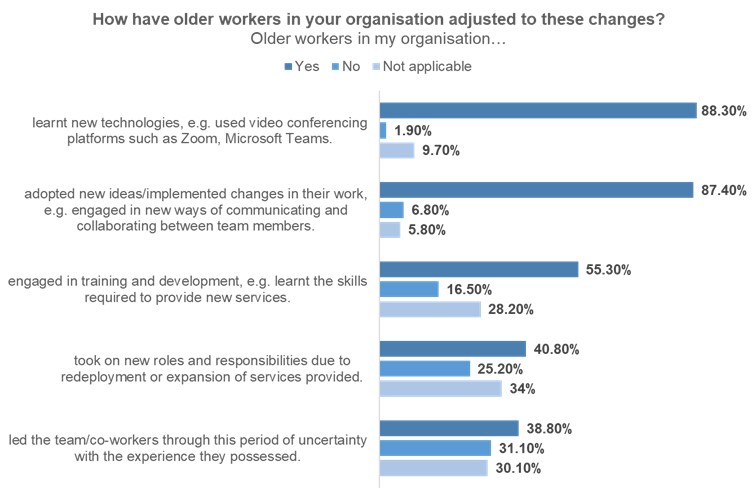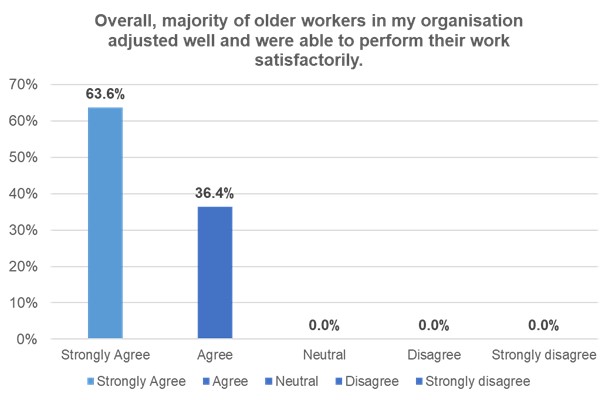Older Workers: Navigating the Impact of COVID-19 on their Jobs
How have older workers navigated the impact of COVID-19 to continue thriving in the age of disruption?
02 Oct 2020 Articles Age management Trending Best practices Future of work

The COVID-19 pandemic has seen many organisations emerge with new work models and a workforce that has successfully risen to the challenge, adjusting and adapting to thrive in this new reality. This includes older workers of today, who are having longer careers than ever before.
TAFEP conducted a poll with employers to understand how older workers navigated the impact of COVID-19 on their work.
The poll found that 88.4% of employers strongly agreed or agreed that the majority of older workers in their organisation adjusted well and were able to perform their work satisfactorily.
Figure 2: How older workers have adjusted to changes to the business
As careers potentially span across more years, as seen from a rise in older residents aged 60 and above remaining in the labour force – from 7.6% in 2009 to 14.5% in 20191, and technology continuing to change the way work is done, skills and knowledge cannot remain stagnant. Having experienced the rapid changes over the past few decades and the corresponding workplace transformation and careers transitions, older workers today understand that continuous learning and upskilling are imperative to sustaining employability and future-proofing their careers.
Based on the poll findings, almost two-thirds of respondents who provided customised, hands-on training for older workers to learn new, necessary skills in response to the business impact of COVID-19 strongly agreed that majority of older workers in their organisation adjusted well and were able to perform their work satisfactorily.
Figure 3: Satisfaction with older worker’s performance and ability to adjust (respondents were organisations that provided customised, hands-on training for older workers to learn new, necessary skills in response to the business impact of COVID-19)
- Provide development opportunities based on fair and objective criteria
- Create a supportive workplace that supports learning at any age
- Promote a culture of learning to bridge gaps between current capabilities and future skills needs, with a focus on cultivating agility and adaptability
- Implement an incentive strategy to encourage employees to take ownership for their own skills development, and recognise those who demonstrate a passion for learning
- Provide better support and resources to guide older workers in their learning process, e.g. creating or modifying existing training programmes, such as modular or smaller sessions, one-on-one coaching or regular check-ins to reinforce learning, etc.
To effectively develop an agile workforce that thrives even in times of disruption, organisations need to act quickly to build and sustain a learning and development strategy that benefits all segments of the workforce, to remain employable in meaningful jobs throughout a longer career runway.
This article is the first of a two-part series on preparing your older workers of today and tomorrow to succeed, that shares some key findings from the poll.
1Source: LABOUR FORCE IN SINGAPORE 2019, MRSD, MOM.



